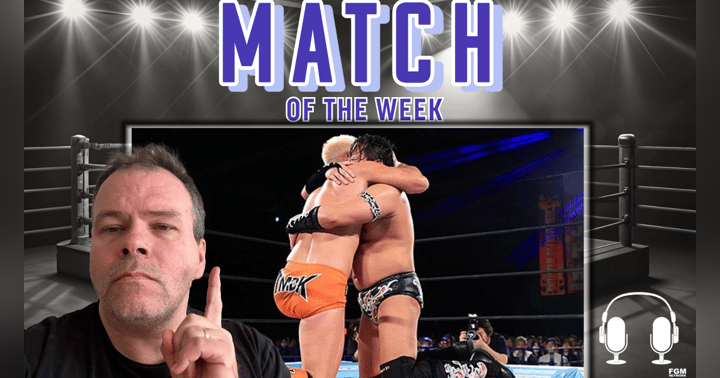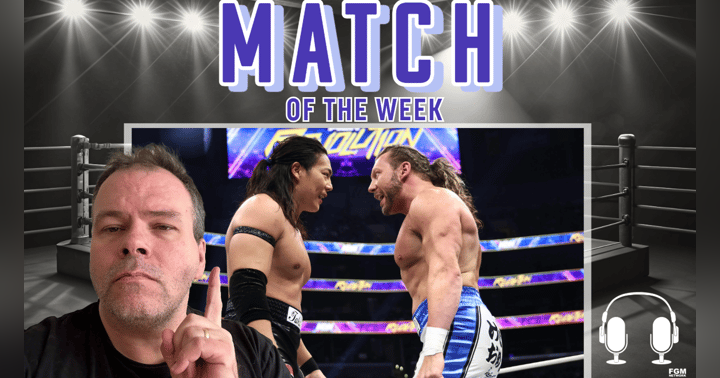The Evolution of Pro Wrestling Storytelling: A Deep Dive into Queen of Villains, Episode Two

The world of 1980s Joshi wrestling was a battlefield, and Queen of Villains captured this brutal reality with an emotional intensity that went beyond just scripted fighting.
Meet Dump Matsumoto, the notorious heel who ruled 80s women's wrestling. Dive into her untold story in the gripping semi-autobiographical drama, The Queen Of Villains. Premiering September 19 ⛓ pic.twitter.com/2PTyJ6yvpB
— Netflix (@netflix) September 1, 2024
Episode two brought us face-to-face with the rise of Dump Matsumoto, whose story wasn’t just one of villainy, but of abandonment, rejection, and the deep scars that came with navigating a fiercely competitive pro wrestling world.
From the opening scene, it was clear that this episode was setting up something bigger—a complex portrait of women fighting not just in the ring, but for their place in an industry run by men.
There was a sense of camaraderie amongst the women on the show, too, and it felt more heartfelt than what we often see portrayed in Western wrestling. In some ways it reminded me of Netflix’s Sanctuary, actually, which focuses on Sumo and shares figurative DNA with pro wrestling in Japan. While these shows are miles apart in terms of focus, the bond created in the dojo system is central to both.
When Dump finally gets her debut match, it makes for a pivotal moment in this particular episode, where she gets squashed by Monster Ripper in brutal fashion. Now, in Western wrestling, a squash match like this might seem typical, but here, it meant more.
In Japan, the debut squash match often evokes sympathy in a way that really sets Japanese and Western wrestling apart. It’s easy to find yourself feeling for Dump here, even though she was supposed to be the “villain.” The only thing that took away from this integral moment was the actress playing Monster Ripper, or rather, her wig, which looked terrible and was distracting. It’s a small detail, and it’s negligible, but for me it broke some of the immersion. The wig itself just screamed “We got it on discount at a nearby Don Quixote.”
The emotional depth in the show’s storylines felt authentic. The brawl scenes weren’t just violent for shock value, either—they had a personal touch that added weight to the drama. When Dump wasn’t allowed to join a post-match barbecue because she went too hard in her match, it felt like a kick in the gut. It was one of those small moments that hit me as a viewer. I can’t help but think of similar moments of power harassment in Japan today.
On the flip side, the portrayal of the Matsunaga brothers continued to come off a bit one-dimensional. While they are clearly the villains of the show, I felt the show leaned a little too hard into that angle, making them seem almost cartoonish at times. Don’t get me wrong—it works for the story, but it’s worth mentioning that the reality was likely much more complicated.
Overall, I really enjoyed episode two of Queen of Villains and I think fans who’ve caught it will begin to realize that this show is one that builds momentum as the series progresses. What was gripping in this episode was how it explored the concepts of camaraderie and exclusion within a Japanese dojo system, a theme rarely addressed with such honesty.
For fans of wrestling history or anyone who appreciates a well-done drama, it’s an engaging watch. The heart of the story—the loyalty, the loss, and the raw, real emotion behind the wrestlers’ personas—that was powerful. If you’re on the fence about this show, I’d say give it a shot and commit to it, because it's a fascinating glimpse into an era of wrestling that deserves attention.
Read our Queen of Villains Episode One review, and keep an eye out for our recap & analysis of Episode Three tomorrow.






